The East End Historic District covers over 50 city blocks in Galveston. In July the time to take a stroll in such a place is early in the morning — not something we did — or late in the afternoon, which we did. It’s a delightful mix of housing styles, or as the East End Historic District Association puts it, offers views of “a towering pillar, shadowed silhouettes of ornate carvings, a splash of stained glass in a window, welcoming porches or a bit of wrought iron fencing.”
It also has trees large enough to move the sidewalks from underneath with their roots. Ann asked about the malformed sidewalks, and I explained that the roots did it slowly over the years.
The Julius Ruhl Residence, at the corner of Sealy and 15th and dating from the 1870s, has a widow’s walk. That’s just not something you see in suburban Chicago.
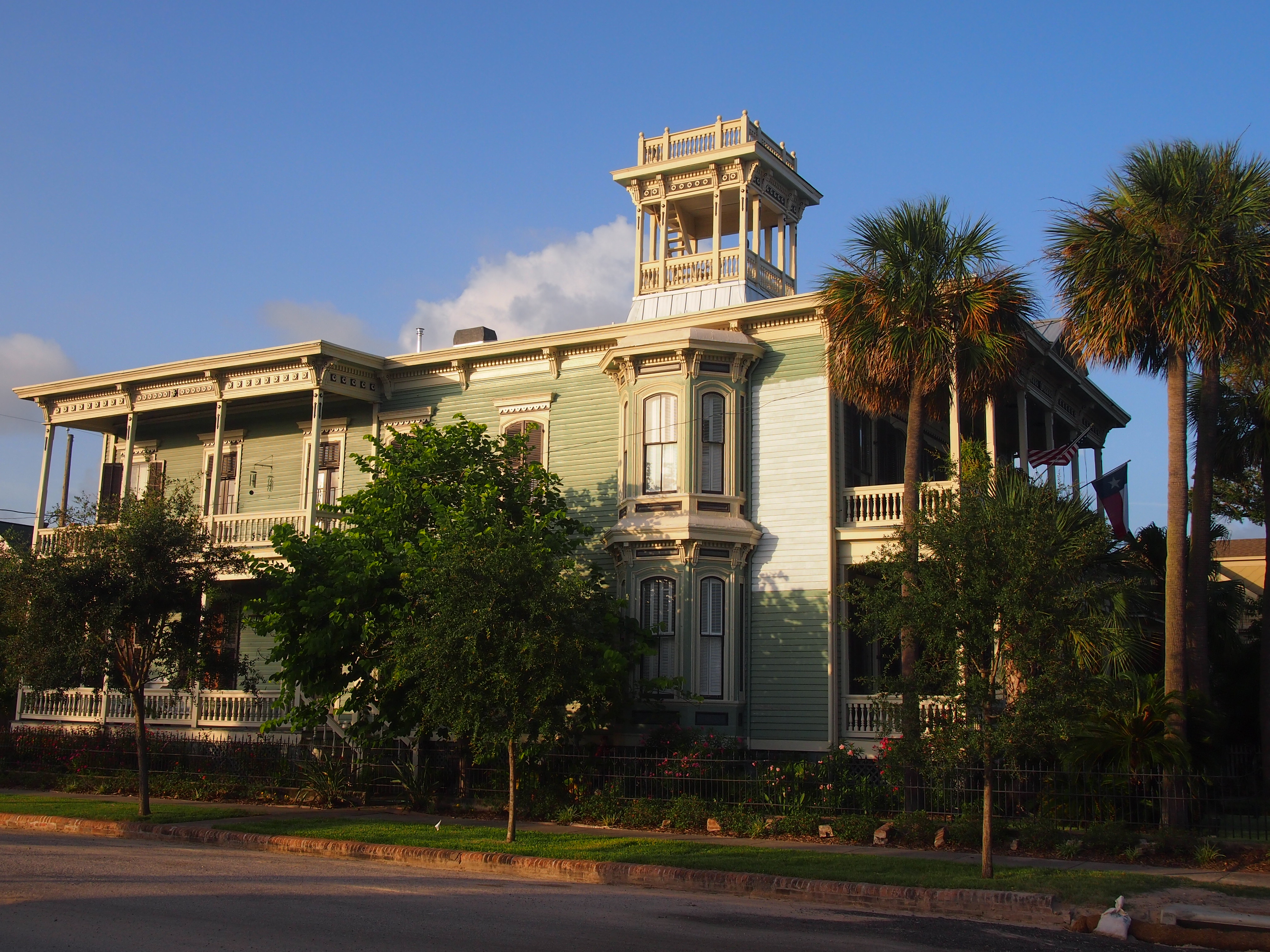 Many houses sport fine porches. A good thing to have in pre-air conditioned times. Or even after air conditioning was invented.
Many houses sport fine porches. A good thing to have in pre-air conditioned times. Or even after air conditioning was invented.
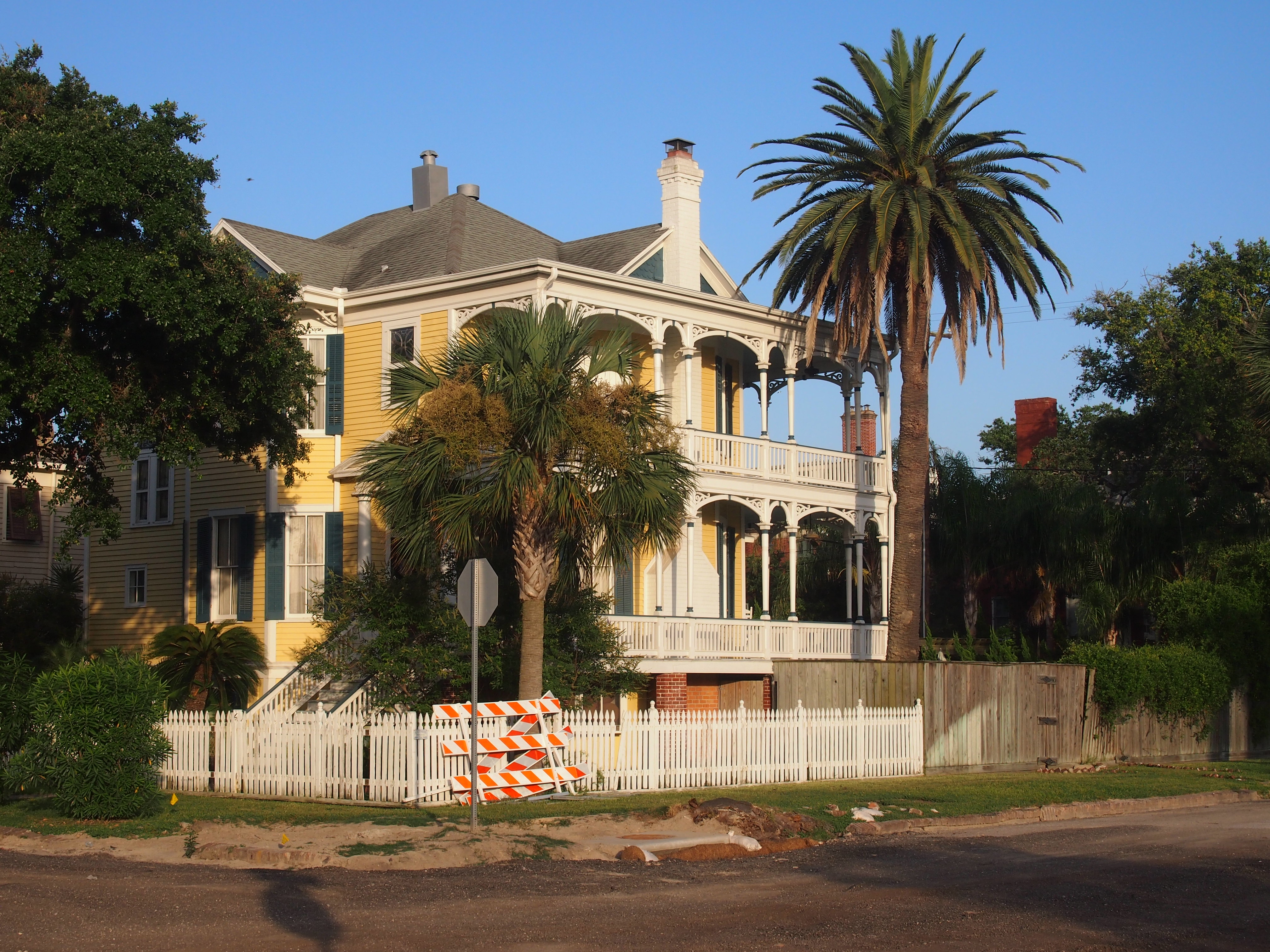 This is the J.C. Trube Castle.
This is the J.C. Trube Castle.
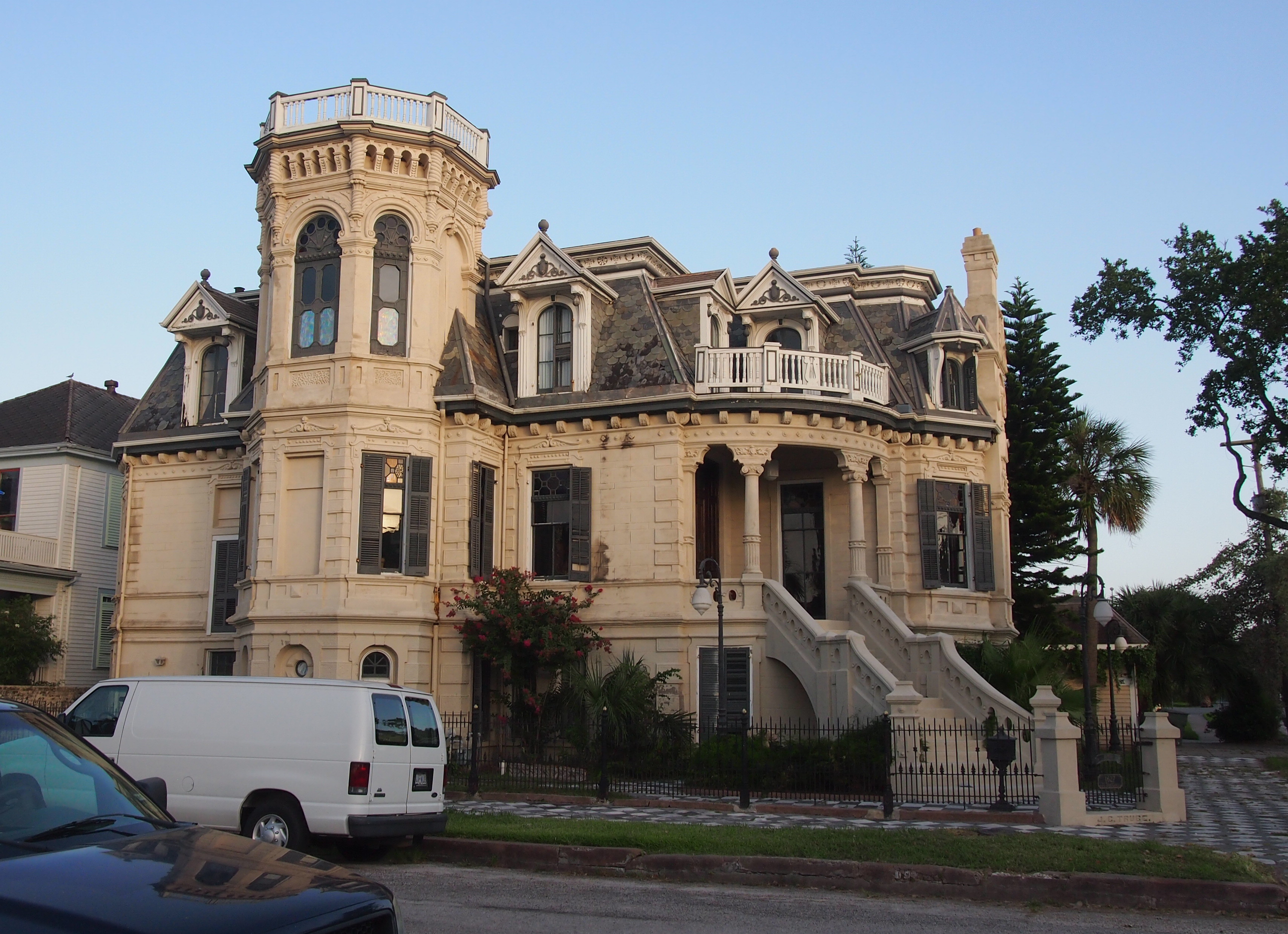 It dates from the 1890s. Its web site — the place is a commercial enterprise now, available for weddings and other events — says the building is “constructed of bricks covered by stucco mixed with Belgium cement creating a rusticated stone effect. The mansard slate roof with seven gables and the battlement tower give the historic home a castle distinction. The observation deck on the top of the tower offers a view of both the gulf and the harbor.”
It dates from the 1890s. Its web site — the place is a commercial enterprise now, available for weddings and other events — says the building is “constructed of bricks covered by stucco mixed with Belgium cement creating a rusticated stone effect. The mansard slate roof with seven gables and the battlement tower give the historic home a castle distinction. The observation deck on the top of the tower offers a view of both the gulf and the harbor.”
The building is also one of the few remaining designs of architect Alfred Muller. Nicholas J. Clayton didn’t design everything in 19th-century Galveston. The Prussian-born Muller also had the relative good fortune to die a few years before the 1900 hurricane.
More pretty houses.
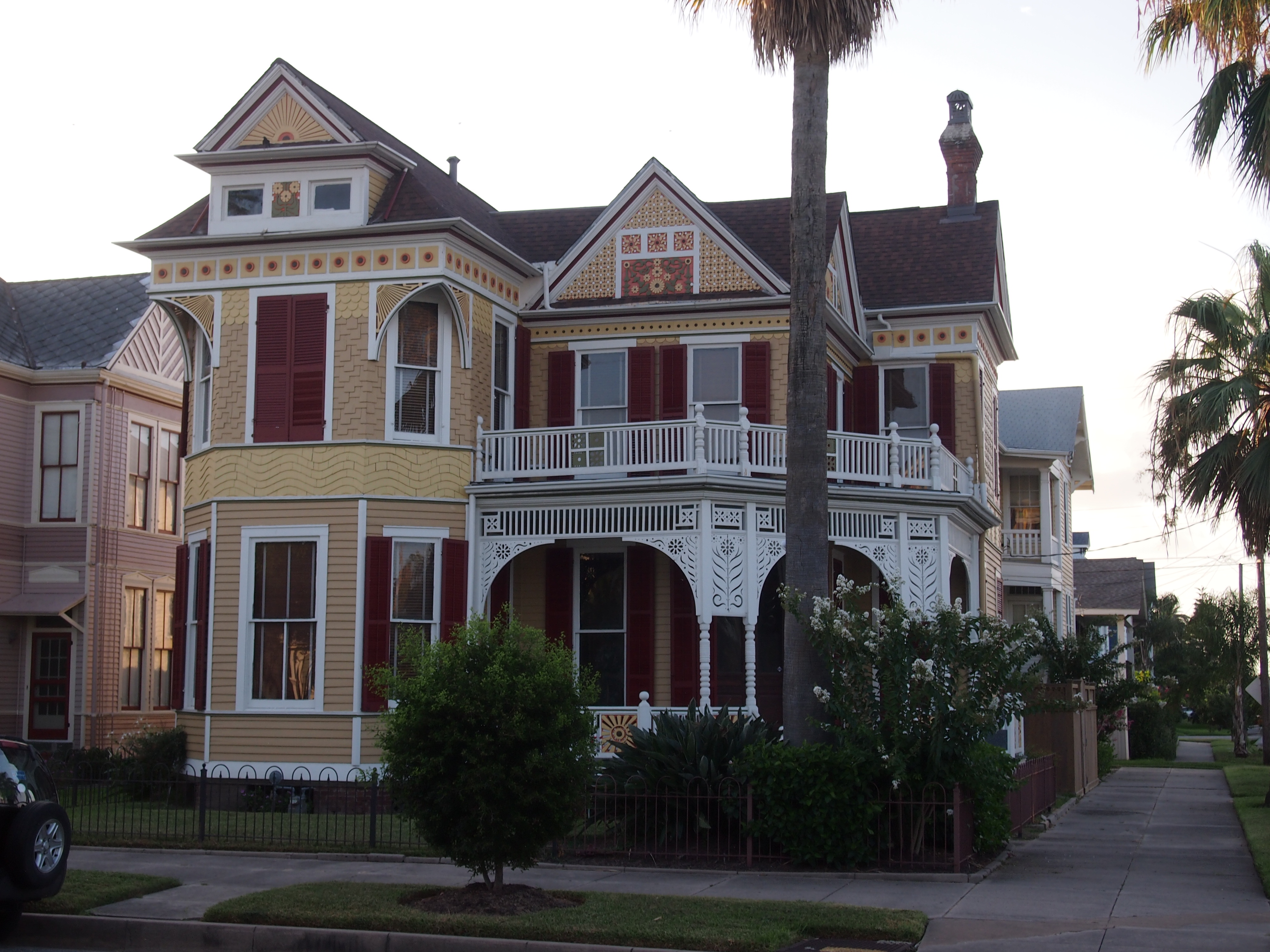
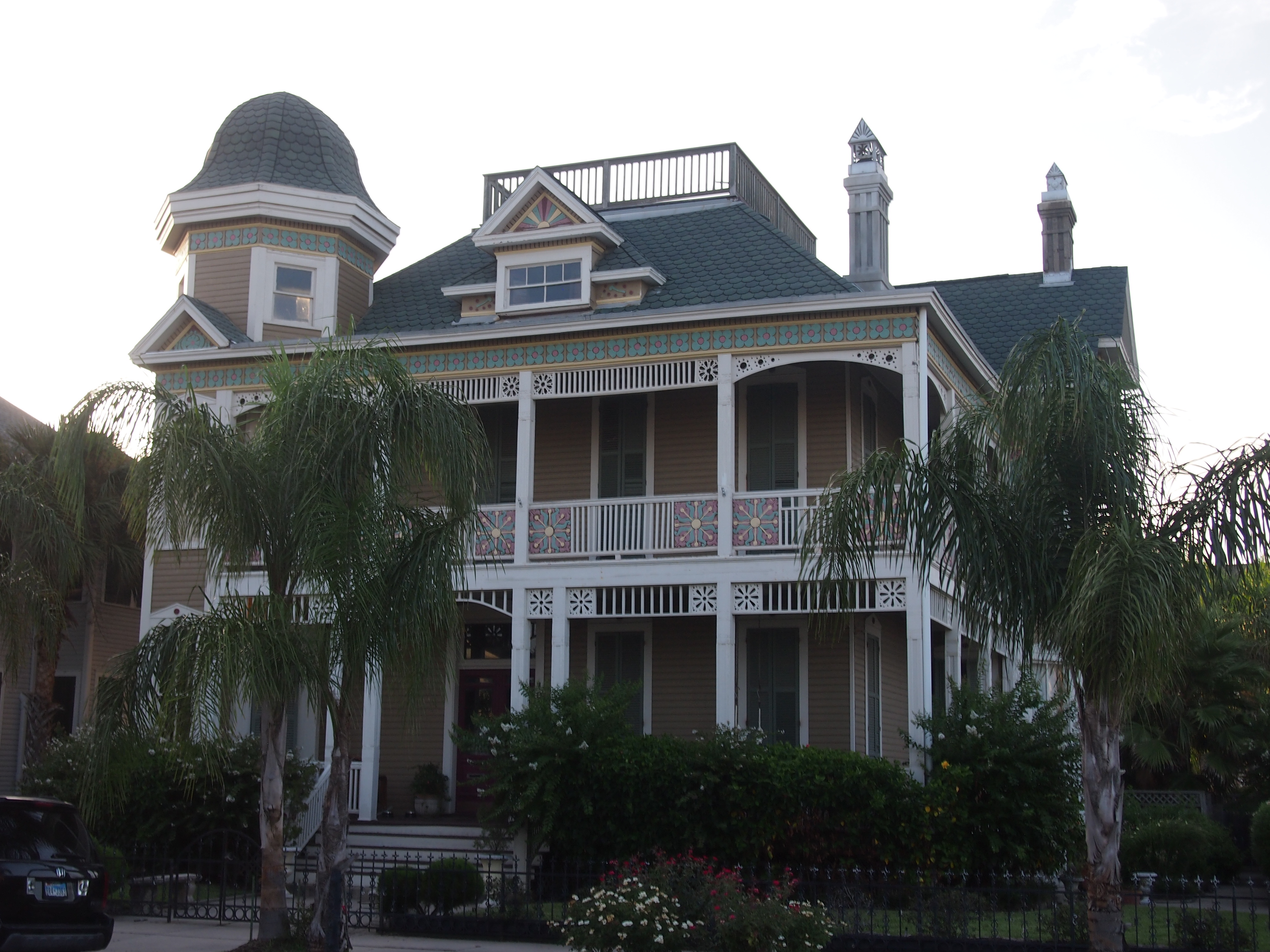 Note the plaques to the left of the door on this house.
Note the plaques to the left of the door on this house.
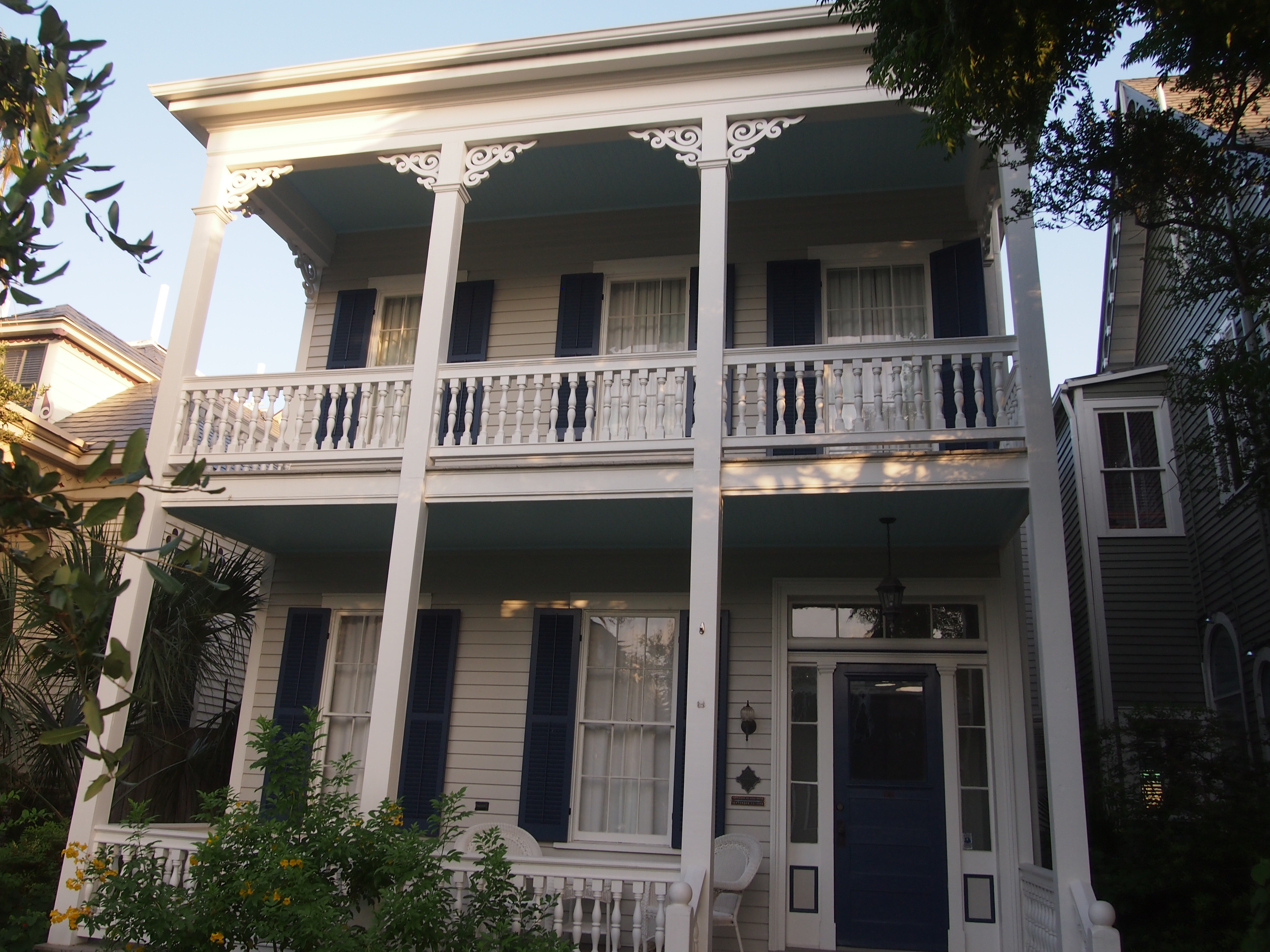
 The upper one’s a little hard to read, but it says 1900 Storm Survivor. Hurricanes are serious business around here. Lest we forget, Ike slapped Galveston as furiously as Katrina hit New Orleans.
The upper one’s a little hard to read, but it says 1900 Storm Survivor. Hurricanes are serious business around here. Lest we forget, Ike slapped Galveston as furiously as Katrina hit New Orleans.